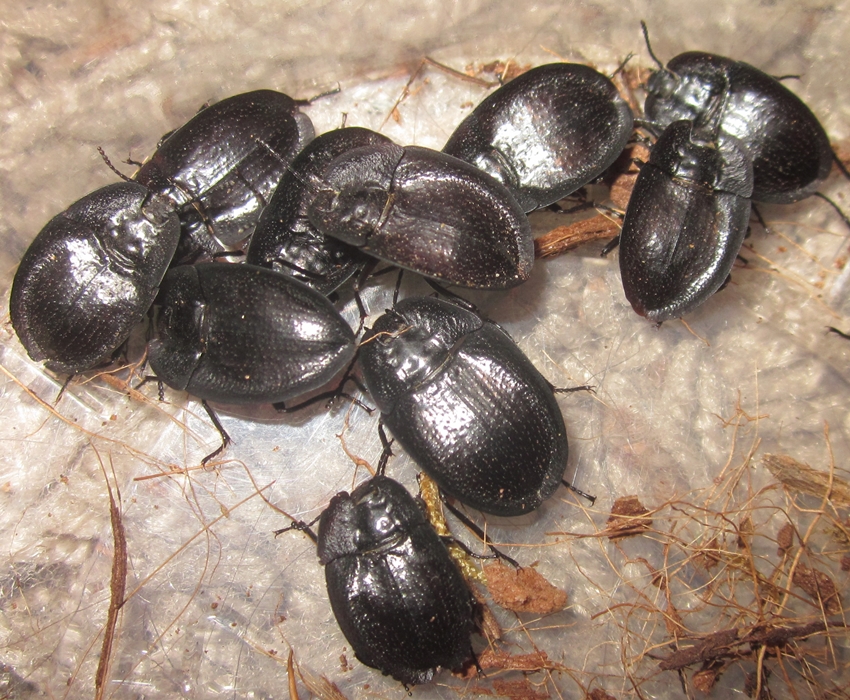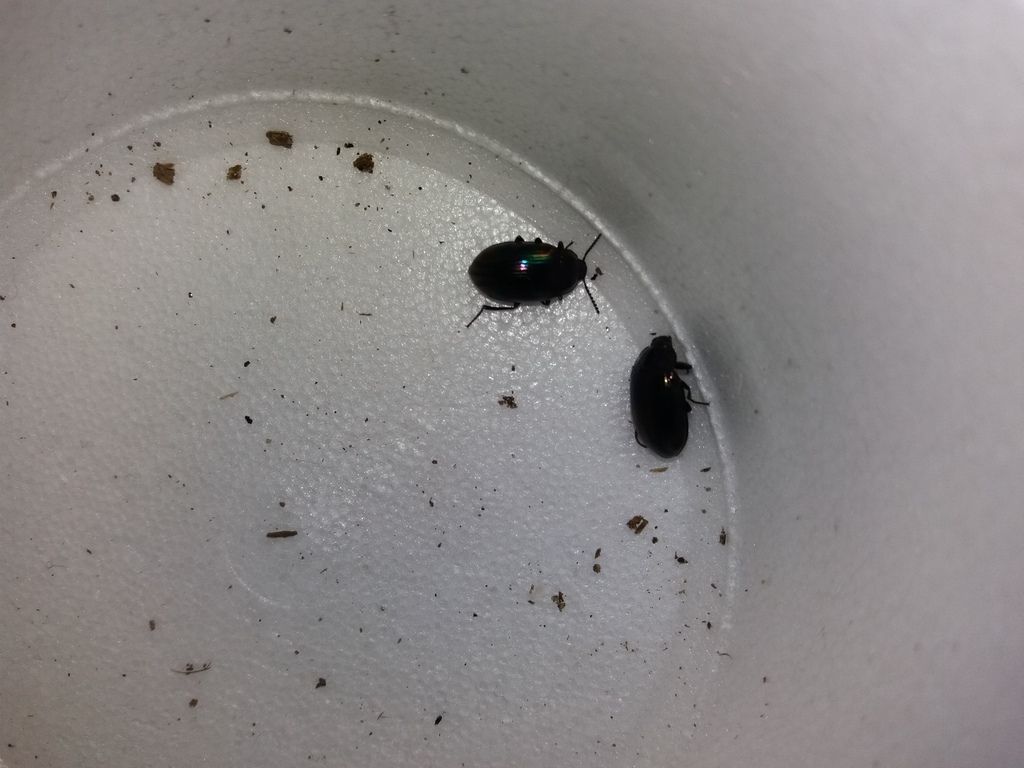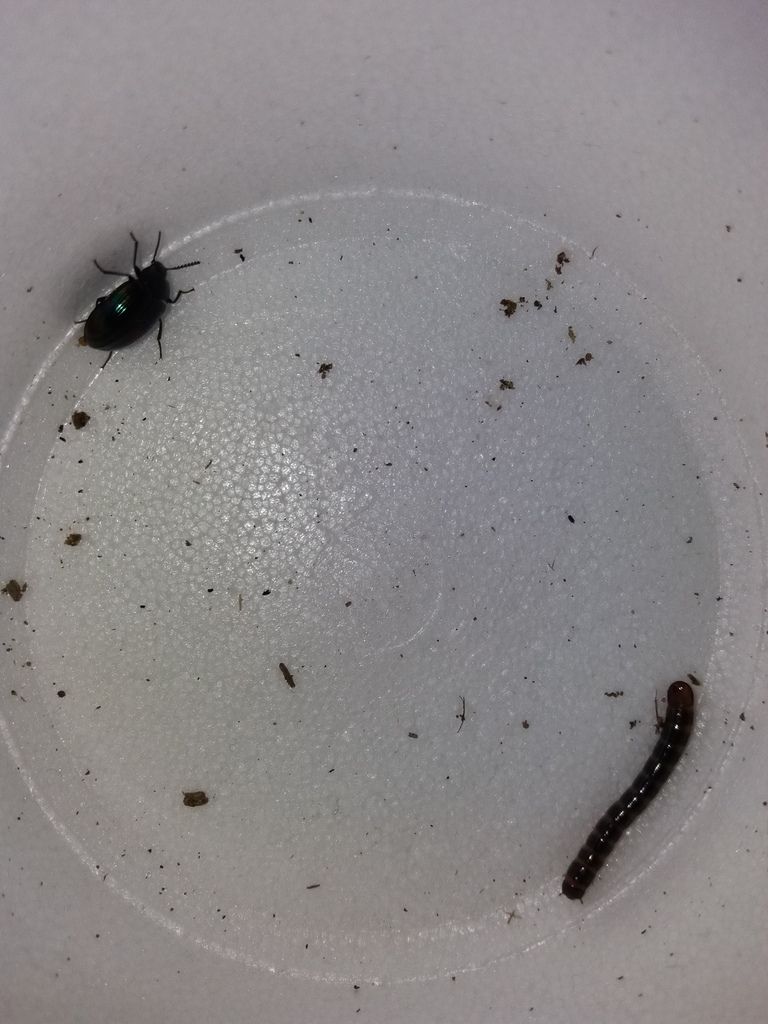Guest viewing is limited
- You have a limited number of page views remaining
- 4 guest views remaining
- Register now to remove this limitation
- Already a member? Click here to login
You are using an out of date browser. It may not display this or other websites correctly.
You should upgrade or use an alternative browser.
You should upgrade or use an alternative browser.
Darkling Beetle Photo Thread
- Thread starter Hisserdude
- Start date
Salmonsaladsandwich
Eleventh Instar
That larva sure has a blunt tail. It's like the insect version of a rubber boa.
I know, it looks like a Meracantha contracta larva, however that's not what the beetles are. Trying to ID the beetles by looking through Bugguide, so far no luck...That larva sure has a blunt tail. It's like the insect version of a rubber boa.
Andy, could you possibly get a brighter picture of your beetles? Which state were the collected in?
Last edited by a moderator:
Well that's why I couldn't identify them by looking though Bugguide, lol!The beetle is Ceropria induta which i collected in Korea and the larva is a Plesiophthalmus species, the adults were collected in japan.
So cool, keep us updated on their progress!Yes i have plenty of the Plesiophthalmus larvae and a pupa and larva of the Ceropria induta.
Last edited by a moderator:
Well cooll, really hope they do well for you, let me know down the line if you have any larva of either species to spare.Im not really sure about the Ceropria but the Plesiophthalmus seem to grow best with it, they tunnel through solid pieces.
Here are some of my Embaphion muricatum adults, these guys are one of the easiest to rear darkling beetles I've ever kept, and the development cycle is pretty quick too! 

All About Arthropods
Elliptorhina
Those guys are sick-looking! Definitely would pick up some if you ever had them available!
I may actually have some larvae available for sale soon, my colony is doing pretty good and is producing a decent amount of offspring. Will definitely let you know when I have some available!Those guys are sick-looking! Definitely would pick up some if you ever had them available!
All About Arthropods
Elliptorhina
Awesome!I may actually have some larvae available for sale soon, my colony is doing pretty good and is producing a decent amount of offspring. Will definitely let you know when I have some available!
All About Arthropods
Elliptorhina
BTW how long does it take for them to get from an egg to an adult?
A few months, depending on how much you feed them. Not crazy fast but faster than some Eleodes species I've kept.BTW how long does it take for them to get from an egg to an adult?
Last edited by a moderator:
pannaking22
Gyna
That's such a cool species. I have one likely from the same subfamily pinned up and I just love the look of them (mine doesn't have the same extreme pie dish shape of yours). How large are they? I'm sure smaller than most Eleodes.
Yeah, they are pretty awesome.That's such a cool species. I have one likely from the same subfamily pinned up and I just love the look of them (mine doesn't have the same extreme pie dish shape of yours). How large are they? I'm sure smaller than most Eleodes.
They get to approximately 18 mm, give or take, size can vary quite a bit between individuals. So yeah, pretty medium sized.
Last edited by a moderator:
pannaking22
Gyna
Huh, not bad at all then! I didn't know there was that much variety in the species.Yeah, they are pretty awesome.There are 8 different species of Embaphion in the US, some with less pronounced ridges on the prontum and elytra than others.
They get to approximately 18 mm, give or take, size can vary quite a bit between individuals. So yeah, pretty medium sized.
It's not a huge variation in size, but I've grown some big individuals and some pretty small ones, some of the larva in the cage try pupating before reaching full size for some reason and those ones make small adults. Not sure if there is a difference in sizes between genders or not, seems like both males and females can be the same size.Huh, not bad at all then! I didn't know there was that much variety in the species.
Last edited by a moderator:


